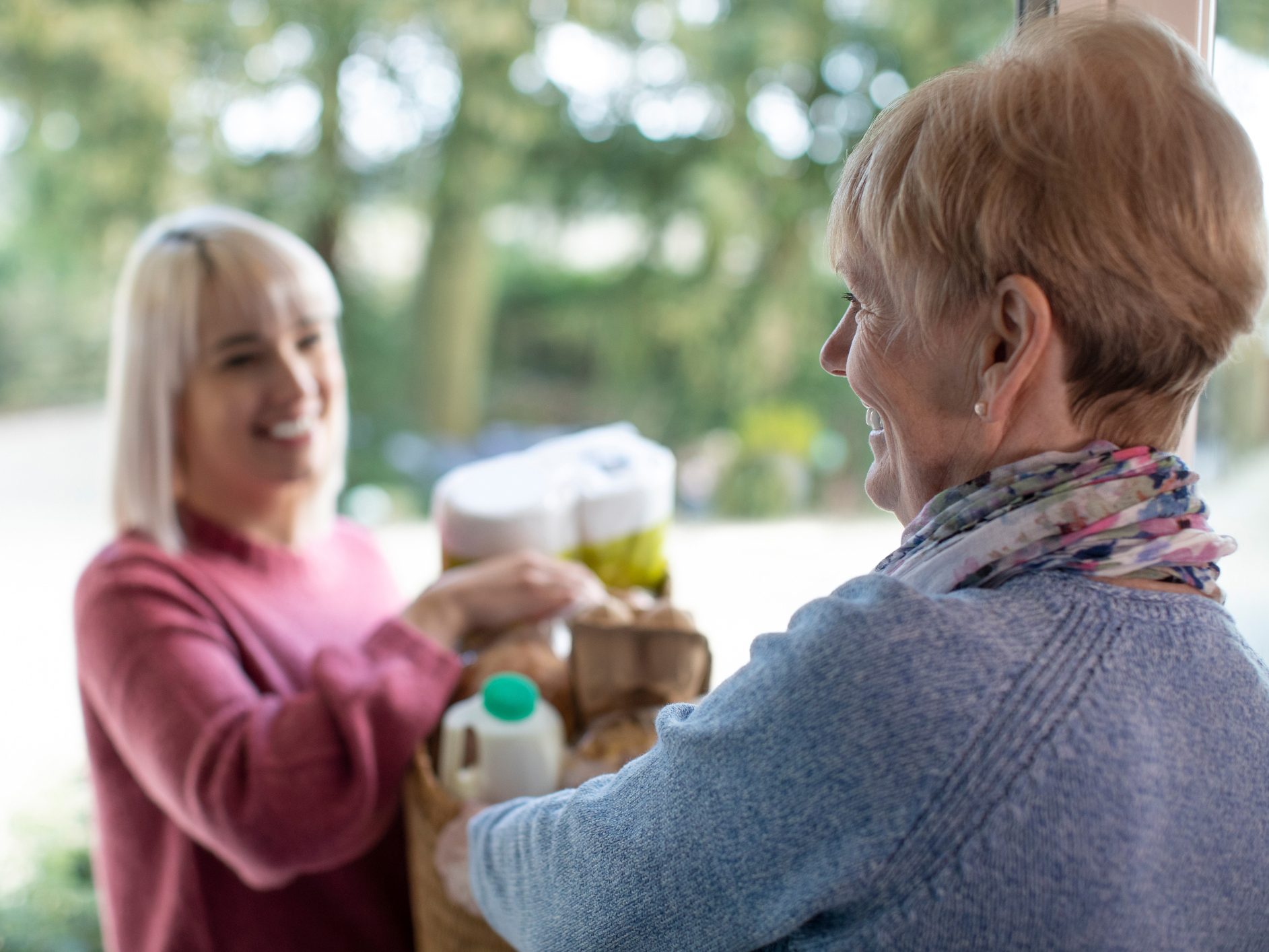Get Easy Health Digest™ in your inbox and don’t miss a thing when you subscribe today. Plus, get the free bonus report, Mother Nature’s Tips, Tricks and Remedies for Cholesterol, Blood Pressure & Blood Sugar as my way of saying welcome to the community!
How to bring essentials into your home without inviting COVID-19 in

With the coronavirus pandemic raging across the globe and from coast to coast here in the United States, it’s vital to remember that every time you step out your door, there is the potential to bring back the virus, not just in your body but on yourself and other objects that enter your home.
And, during this time, the most likely item you’re walking into your home with is food – either in the form of groceries or takeout.
Sadly, according to Dr. Jeffrey VanWingen, a family physician at Family Medicine Specialists in Grand Rapids, Michigan, even though we must have food to survive, it could also be the reason we become infected.
In fact, he says that the best way to think about coronavirus to increase your level of protection from the virus is as glitter… Glitter that covers everything out in the world around you.
So, when you’re at that grocery store, you walk through coronavirus glitter lingering in the air from the man who just walked down the aisle coughing.
Related: Safer ways to get your groceries during the COVID-19 pandemic
You pick up a can of chili covered in glitter because a woman who has the virus but is asymptomatic picked it up to read the label two hours ago.
You grab a bag of oranges dusted in glitter because someone in the fruit section sneezed.
And, you bring home a bag of hamburgers and French fries along with a side of glitter because the teenager working the drive-thru came to work feeling a little sick but not bad enough to stay home.
But, where does that leave you?
Are you just doomed to becoming infected with coronavirus yourself unless you live off of only what’s stored in your freezer and pantry over the next few months?
Well, not necessarily — at least you’re not when you take precautions to disinfect the groceries and takeout you bring home.
Here’s how…
Softsoap Liquid Hand Soap
Wash away dirt and bacteria with Softsoap liquid hand soap gentle cleansing formula.
Only what you need or what will spoil
Dr. VanWingen points out that the best way to avoid the virus is to first only bring into the house what you have to while leaving the rest outside your doors as long as possible to allow the virus time to die.
This means that when you go grocery shopping, if it’s non-perishable and you don’t need to eat it that day, it’s better to find a safe spot on your porch, or even just in your car where you can leave the item until you absolutely must bring it in.
Obviously, this can’t be done for meats, dairy, takeout and other types of food that will go bad, but when you can, this should be your go-to method of coronavirus protection.
Making sure it’s disinfected
Next, anything that must come in should be disinfected using the same types of procedures doctors and nurses use in operating rooms, following these steps for your groceries:
- Set up a clean and a dirty side on your countertops.
- Put bags of groceries on the dirty side and use a disinfecting spray and cloth to wipe down the other side.
- As you remove groceries from the bag, wipe down each item before placing it on the clean side of your counter.
- For items, like frozen pizza or cereal, that have an inner packaging and an outer cardboard box, remove the inner packaging and place it on the clean side. The outer packaging goes straight to the trash. (In the case of items have cooking instructions printed on the box, you can write the instructions on a sheet of paper and tape them to the inner packaging.)
- Wash any vegetables and fruit in clear, running water for a minimum of 20 seconds before placing on the clean side.
- Get rid of all grocery bags and sanitize your counter. (It’s also better to avoid using cloth grocery bags to prevent contamination.)
Now that you understand how to increase the safety of your groceries, let’s move on to takeout food since it presents its own challenges. Here are the steps that Dr. VanWingen recommends:
- Remove each individual item from the bag and dump it onto a plate without allowing the outer packaging to come in contact with the food itself.
- Open condiment packages and squirt onto a plate carefully to avoid contamination.
- Heat food in the microwave to help kill any virus lingering in the item.
- Throw out all packaging.
The coronavirus pandemic has come with challenges that most of us have never faced or even thought to face in our lifetime. But, with planning, good disinfection procedures, and a healthy dose of common sense, we can increase our chances of avoiding the virus lurking like glitter in the world around us.
Sources:













